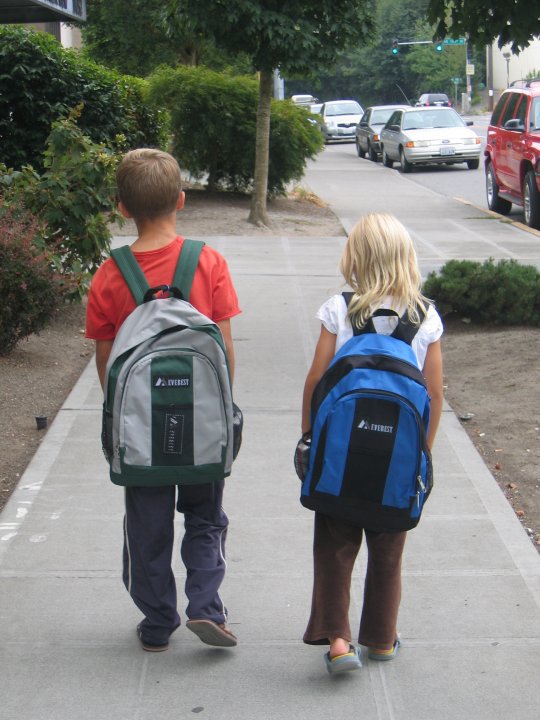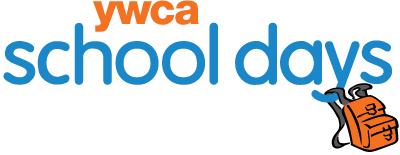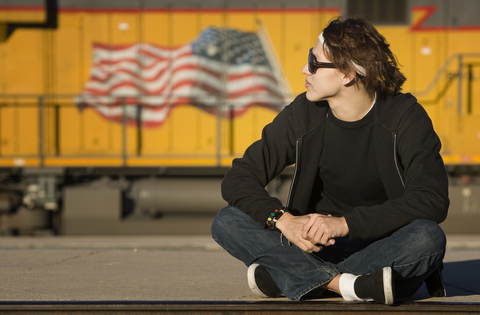Written by Catherine Hinrichsen, Project Coordinator, Seattle University Project on Family Homelessness

By the age of eight, Aidin had gone to so many schools that he no longer bothered trying to remember the names of his new friends. He knew he’d probably be leaving them sometime soon when his family was forced to leave their home and move somewhere else. He told himself that if he knew the names of his friends, he would miss them even more when he had to leave.
Aidin is like thousands of school-age children in Washington state who will be homeless this year. These kids face obstacles that would crush many adults. They may have to move frequently and have little chance to set down roots or make friends. They may be hungry and have limited access to hygiene facilities. They may get very little sleep, which affects not only alertness but their growth and development. They may be tardy to school and all too often miss class altogether. When they get sick, they have no place to rest and get well, and have limited access to healthcare. They may have no place to study and do homework. They might need help with emotional and behavioral issues as a result of homelessness. Yet they are expected to function in school alongside their peers. Even if they find a stable and nurturing environment – as Aidin has – the experience of homelessness can affect their school progress for years.
Jess Lewis of the Washington State Office of the Superintendent of Public Instruction (OSPI) shared Aidin’s story with the 75 or so service providers, school staff and others who attended the Aug. 22 workshop in Seattle, “Supporting Students who are Homeless: McKinney-Vento 101.” The workshop, sponsored annually by the Seattle-King County Coalition on Homelessness (SKCCH), trains school staff and providers on how to help students access school services and support guaranteed by federal law, the McKinney-Vento Homeless Education Assistance Act.
This year, legal advocates and providers are taking time to recognize the 25th anniversary of McKinney-Vento, the first major federal legislation to address homelessness.
“Schools stabilize families,” Jess told the crowd of workshop attendees. Those are powerful words. For children who are homeless, schools play an extremely important role because school staff are often the first in the service network to recognize that a child is homeless or at risk for it, according to Columbia Legal Services (CLS) of Seattle. CLS is a law firm that advocates on behalf of people living in poverty and specializes in the educational rights of children. If schools know how to respond when they see a child in need, they can get families connected with services that can prevent homelessness, or help them move out of it.

Jess, the program assistant for the McKinney-Vento program at OSPI, works with the program supervisor she calls “the awesome” Melinda Dyer. Their office helps ensure equal access to education for children who are homeless in our state. They do this through a network of 295 Homeless Education Liaisons at each Washington state school district. The liaison’s job is to identify students who qualify for McKinney-Vento status and ensure they have equal opportunity to succeed in school. Some districts are moving to install a Building Liaison at every school in the district.
According to OSPI’s 2010-2011 school year count, 26,048 school-age children are homeless in our state. Columbia Legal Services, which analyzes the data and publishes it on its excellent SchoolHouse Washington site, says this equates to one in 40 students – a 19 percent increase over the previous year and a 55 percent increase over 2006-2007. Almost 1/3 live in rural areas.
Attorney Katara Jordan, co-presenter at the workshop and Equal Justice Works Fellow at CLS, addressed the legal issues of McKinney-Vento at the workshop and talked about the statistics. Katara said the increase in the number of homeless students is partially due to an increase in homelessness, but also because school districts are doing a better job of identification.
For Jess, Aidin’s story is personal. Jess herself was homeless as a youth. As an adult, she’s helped homeless children and youth since 1996. Then Jess found herself as unofficial guardian of Aidin, her grandson, who was homeless until she took him into her care. Now, because she can’t be appointed his guardian without a protracted legal fight, she has experienced firsthand the challenges families face when they try to navigate the system, such as trouble requesting his records, getting medical care and receiving special education services. They even had difficulty figuring out which school Aidin attended last because, having changed schools so many times, he couldn’t remember the name of his last school and they had to look at photos of schools online. Fortunately for her grandson, Jess knows that Aidin cannot be denied basic educational rights, because of McKinney-Vento.
My reason for being at this session: I feel like I have a lot of making up to do. Until I started working on our Seattle University Project on Family Homelessness nearly three years ago, I didn’t realize that families are the fastest-growing homeless population. I had never thought about the impact of homelessness on children in school. As the parent of a teen who has attended Seattle public schools his whole life, I look back at our school experience and try to see it through the prism of a family struggling to stay housed.
Who are the homeless children? McKinney-Vento, reauthorized in 2002, seeks to ensure basic educational rights for children and youth who “lack a fixed, regular, and adequate nighttime residence,” such as those who are:
- Sharing the housing of others due to loss of housing, economic hardship, or similar reason
- Living in motels, hotels, trailer parks, camping grounds due to lack of adequate alternative accommodations
- Living in emergency or transitional shelters
- Abandoned in hospitals
- Awaiting foster care placement
- Living in a public/private place not designed for humans to live
- Living in cars, parks, abandoned buildings, bus/train stations, etc.
- Migratory children living in above circumstances
Children who are homeless must have equal access to special education services and instruction for English language learners, as well as after-school care and activities. They also have the right to be enrolled in gifted and talented programs, such as Advanced Placement (AP). Young children have preference for Head Start if they qualify under McKinney-Vento.
The McKinney-Vento definition is broader than that used by the U.S. Department of Housing & Urban Development (HUD), Katara explained, so its counts are higher than those of HUD. Even so, as with any homeless population, the number is likely under-reported.

Barriers and Solutions: “People just don’t know how hard it is to be a homeless child,” said Tamara Brown of Solid Ground, the SKCCH board member who introduced the session. Homeless children face many barriers to school, all of which McKinney is designed to mitigate. Katara and Jess outlined some of the barriers:
- Frequent moves and absences. Children who are homeless often change schools multiple times a year and miss far more school than their peers. Every time they move, they fall farther behind; it takes children an average of 4-6 months to recover academically after changing schools. “This is what sticks out most to me,” Katara said. “If a child leaves school two-three times a year, he or she can end up being a year behind.” Under McKinney-Vento, the school district should make every effort to keep the child in the same school as long as it is feasible.
- The enrollment process can be daunting even for families with stable housing: You need proof of residence, a birth certificate, school records and immunization records. Families who are homeless have a hard time getting access to these and are often told they must wait weeks to get them. Under McKinney-Vento, the need for records is waived and kids have the right to be enrolled immediately in their neighborhood school or the “school of origin” (most recent school attended, or school attended when last permanently housed) – whichever is in the child’s best interest. The district must provide transportation too; this can even mean being transported by taxicab from one district to another if that is the best alternative.
- School supply costs add up quickly. When my son was entering kindergarten at a public school 10 years ago, our “welcome letter” included a shopping list of supplies like fat colored pencils, wide-ruled paper and Kleenex, all of which cost $50-$75 or more – per kid. As a high school freshman last year, he was required to buy a graphing calculator that cost $150. Gulp! That’s a big chunk for most people, and out of reach for families without homes. Under McKinney-Vento, these children have the right to get help with basic school supplies, even uniforms and shoes.

- Fees for school activities. On the first day of school, your kid may bring home a packet full of forms that all seem to require that you write a check. One of these is for student activities. At my son’s high school in Seattle, the student ID/activity card – called the ASB Card – is $50. Without it, kids can’t participate in sports, clubs or any other after-school activities. At our training session, one of the providers said she works with a homeless girl who wanted to be in a club but was told she couldn’t, because she didn’t have an ASB card, and the school told her they were not required to provide her with one because clubs are outside of the educational experience. “That is incorrect,” Katara said. Under McKinney-Vento, schoolchildren must have equal access to after-school activities too. Jess pointed out that the student ID can also be an important form of identification outside of school for homeless youth. Sometimes schools waive the fee, or ask a boosters’ club or PTSA to cover the costs.
- Meals. Homeless kids may be chronically hungry, and sending kids to school with a packed lunch can be hard for a family that is struggling to meet basic needs. Therefore, school can be an important source of food for kids living in poverty – sometimes the only meals they get all day. Kids who are homeless automatically qualify for free breakfast and lunch in schools that serve both.
- Fear of stigma. Some of the providers in attendance raised the point that families sometimes fear that their children will be stigmatized for being homeless. In the past, kids were even segregated into special classes for homeless kids. Under McKinney-Vento, such segregation – into separate schools, or programs or settings within a school based on housing status – is against the law. Jess feels this should extend to recommending that shelters not send all the kids living there to the same school. Other providers said they work with teen runaways who want to go to school but are afraid they’ll be sent to detention, or worse, back to the family situation that they left. Jess said students should not be disciplined for truancy if the truancy is a result of their homelessness, and Katara advised that kids afraid of being “hauled away” should call CLS. Regarding privacy, information gathered by homeless liaisons is kept confidential, and data collected by OSPI is not disaggregated in a way that identifies the student, Jess said, so her office does not know the individual names of the children. She also suggested liaisons use different language to identify students who might be homeless, because families may not consider themselves homeless, or do not want to be categorized that way. An alternative might be to ask if the family is experiencing housing instability or is transitioning between housing.

- Lack of Information. Sometimes families just don’t know that they can get help because despite even the best efforts, information doesn’t get to the right people. At my son’s middle school, there was a McKinney-Vento poster on the wall that announced, “Your contact for information about your educational rights is…” followed by a big blank box that wasn’t filled in. (I’ve always regretted not going to the office and asking them to fix this.) With the appointment of building liaisons, that should be improving. Jess said that teaching peers to help friends can be very powerful, because friends find out things that kids don’t want teachers or staff to know. Language barriers can be a hindrance as well. Fortunately, OSPI has materials available in multiple languages.
Providing these services, especially transportation, can be costly for budget-stretched school districts. Some federal money is available, but not for transportation. Asking the school community to pitch in is not a long-term solution, especially in very low-income communities. Local governments and the housing community are pushing to connect families to services through coordinated entry systems – such as the new King County Family Housing Connection (2-1-1 by phone) or the Access Point 4 Housing in Pierce County — and stabilizing their housing situation, in addition to providing affordable housing.
Schools can be a stabilizing factor, and linking school to housing can be cost-effective, according to CLS. In fact, it can be less expensive to house a family of four for one year in a Section 8 apartment near a school than to provide transportation to school, according to the “Beds and Buses” study by the National Law Center on Homelessness & Poverty in collaboration with CLS. In addition to the cost benefits, stable housing reduces the stress of homelessness and the hours kids might spend being transported to school and back each day.
The McCarver Elementary School program in Tacoma is a great example of success in linking school and housing; read more about it here.
Telling the Story. Sharing stories about problems and progress can be an important advocacy tool. Here are some highlights of outstanding journalism projects on homelessness among schoolchildren that yielded results.
- PBS Newshour: Two years ago, one of the journalists in our Journalism Fellowships on Family Homelessness program at Seattle University decided to examine how well local school districts are complying with McKinney-Vento. The journalist, Lee Hochberg, produced this hard-hitting report for the PBS Newshour. In one memorable segment, Hochberg followed a grandmother who had met repeated roadblocks in trying to get her grandson enrolled in the Seattle Public Schools, the state’s largest district. At the time, there was one homeless education liaison for all 100 schools in the district – and she was only assigned at one-quarter time. Today, only two years later, the district has made significant improvements, Jess said. There is a new full-time District Liaison, Dinah Ladd, and every school is required to appoint its own Building Liaison for homeless services.
- The Herald: The Journalism Fellows team at the Herald in Everett produced this January 2012 story about the situation in Snohomish County, and the homeless education liaison, Mary Ellen Hardy, engaged online directly with many commenters after the story was published.
- 60 Minutes: It’s been more than a year since the first airing of Scott Pelley’s 60 Minutes “Hard Time Generation” story on “Homeless kids,” March 2011, followed by “Families living in cars,” November 2011. Many of us remember these stories largely because of the resilient Florida teen Arielle Metzger, who lived with her dad and brother in a truck, yet was determined to go to college. Since then, help has poured in, including $1 million in contributions to providers and college scholarships for Arielle and her brother, and a couple in Florida was so moved by the story that they recently donated $100,000 to a Tampa Bay nonprofit to help homeless families.

What You Can Do
Five things you can do to advocate for the educational rights of homeless children:
1. Visit the OSPI site, Columbia Legal Services’ SchoolHouse Washington, National Center on Homeless Education (the U.S. Department of Education clearinghouse) or the National Association for the Education of Homeless Children and Youth to learn more. Follow them on social media, including @schoolhousewa. Share the excellent reporting you see.
2. If you’re a parent experiencing homelessness, exercise your children’s rights by contacting your school district’s Homeless Liaison, or the OSPI.
3. If you’re a teacher, school administrator, bus driver, or other staff member, see the “Five in Five” lists in OSPI’s educator’s guide, “Amanda Goes to School.” Find out who is your District Liaison. Find out what training is available to you from your district, from OSPI or others. In King County, you can learn about SKCCH training by signing up for their e-news. If you have travel funds, consider attending the NAEHCY national conference Oct. 27-30 in Albuquerque.
4. If you’re a parent fortunate enough to be stably housed, do a spot-check of the halls of your child’s school. Is there information about McKinney-Vento posted prominently? Consider hosting a book, clothing, school supply or instrument drive at your school or church. Another easy thing to do is to always add a few bucks onto the checks you write for field trips and lab fees, so that schools can more easily cover the costs for kids who can’t afford it.
5. For everyone who works with children: We’re excited about our collaboration with the Seattle Children’s Theatre on their production of a play about a middle-school boy and his mom experiencing homelessness, “Danny, King of the Basement,” Oct. 18-Nov. 18. Thousands of schoolchildren from Western Washington will attend this play on field trips. Teachers and parents can get discussion guides and more from the Children’s Theatre. Additionally, we’ll be hosting free community events to support “Danny” in King, Pierce and Snohomish Counties in early October; you can find more information here.
There are thousands of Aidins and Dannys in our state, but we can take action to make sure they get access to school and the services that can help keep them there.